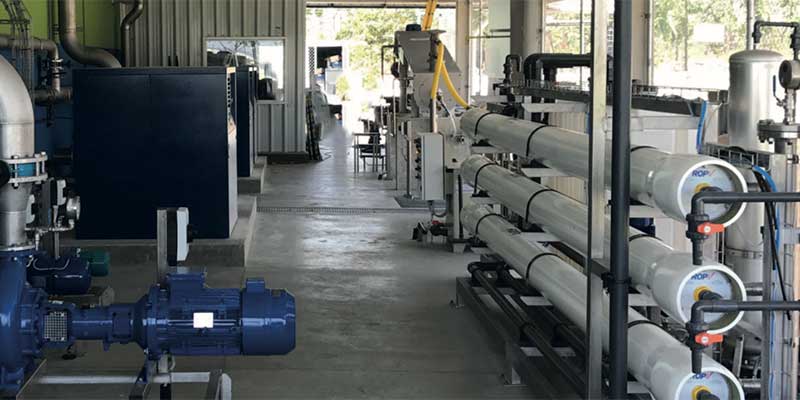Aerobic Treatment for Reuse of Wastewater at Fish Processing Plant
Advanced technology treats difficult effluent for reuse and eliminates the need to buy imported water

Fluence aerobic treatment treats difficult effluent to the point that it can undergo reverse osmosis.
Background
Tadel SA is a fish flour and fish oil processing company in Rocafuerte, Ecuador. It produces 100 tons of flour a day from fish waste, resulting in approximately 300 m3/d of wastewater. The wastewater is a combination of washing water, boiler blowdown, and cooling-tower water, as well as waste from the broth concentration plant and from the drying of flour.
Challenges
The company needed to treat its wastewater and to reduce its water supply costs. Because the western Ecuadoran province of Manabí, where the company is located, has shortages of both drinking water and water for irrigation, Tadel was only able to obtain 350-400 m3/d of water from the public network and was buying water from tankers at a cost of about $3/m3.
The available water was rich in salts that make boiler blowdown very expensive. Additionally, recycling wastewater from the fish processing industry is particularly complicated because the effluent is difficult to treat, with nitrogen content between 600-800 mg/L, phosphorus between 30 and 80 mg/L and COD between 5,000 and 8,000 mg/L.
Fluence was asked to design a system that could purify the water to a level sufficient for further treatment with reverse osmosis.
Solutions
Fluence developed a treatment train with a cooling tower for the evaporator plant's condensate, followed by an equalization tank. After mixing, the wastewater is subjected to an aerobic treatment, including a nitrification-denitrification process with a membrane bioreactor (MBR). Ultrafiltration membranes eliminate suspended solids, allowing for demineralization by reverse osmosis.
Results
Fluence's technologically advanced solution offers many significant advantages. The use of demineralized water in the cooling circuits and for production of steam allows a significant reduction of boiler blowdown with consequent fuel and water savings. The use of demineralized water in the process reduces the salinity of the wastewater, making it suitable for irrigation.
To produce demineralized water, the treatment plant concludes with membrane ultrafiltration followed by reverse osmosis. This solution permits recovery of about 240 m3/day of demineralized water for annual water savings of $210,000. Most of this water is recycled during the production process and is used to feed the factory boiler. Due to this treated water’s lower salt content, this reduces the purge of the boiler and results in fuel savings of $140,000 a year.
Thanks to the Fluence reuse solution, Tadel has zeroed its water footprint, reducing water consumption to the point that the company no longer needs to buy water, but instead produces a surplus available for irrigation, reuse, or reintroduction into the environment.
Benefits of the system include:
- Production of 240 m3/d of demineralized water for reuse
- Production of 60 m3/d of excess water for irrigation
- Fuel savings of $140,000 per year
- Water savings of $210,000 per year
- Carbon footprint reduction of 1,290 tons of carbon dioxide per year
Are you interested in increasing your plant's water sustainability by treating effluent for reuse? Contact our experts at Fluence with any questions or to discuss your next project.
PROJECT DETAILS
LOCATION
Rocafuerte, Ecuador
CUSTOMER
Tadel SA
SOLUTION
Aerobic Wastewater Treatment and Wastewater Reuse
TECHNOLOGIES
Cooling tower for condensate, rotating sieve, mixed equalization tank, nitrification-denitrification treatment with MBR, reverse osmosis.
